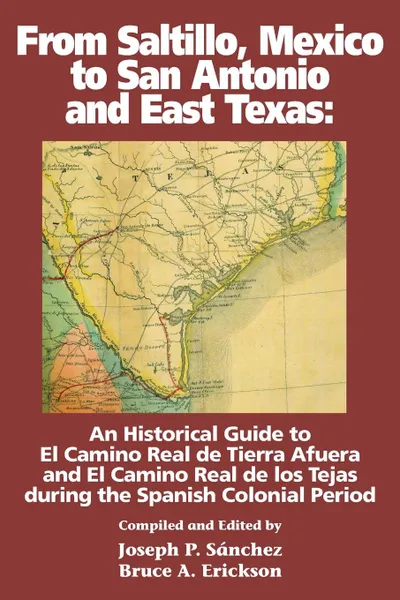From Saltillo, Mexico to San Antonio and East Texas 12+
Автор: Joseph P Sanchez,
Bruce A Erickson
2016
348 страниц
Категория: Литература на иностранных языках
ISBN: 9781943681044
Язык: Английский
📘 Forged from Native American pathways, the Camino Real de los Tejas and its variants became an important transportation corridor during the Spanish Colonial period of Texas. Following the explorations of Alonso de León, between 1686 and 1690, Spanish missionaries and soldiers began the earliest European settlements in Texas. Mexican Territorial and early Anglo-American period immigrants to Texas also contributed much information about its people, land, and trails.
Through their diaries, correspondence and maps, Spanish explorers, missionaries, and settlers provided an historical and ethnographic context about the early history of Texas. Today, historians and archaeologists utilize key historical texts in their studies about Texas and its early roads. The significance of the Camino Real de los Tejas and its variants, to the history of Texas and our national story, is clearly demonstrated in their scholarly works used in this publication.
In 2004, the United States Congress designated the Camino Real de los Tejas National Historic Trail. Later, in 2015, UNESCO designated San Antonio Missions National Historical Park as a World Heritage Site. Such honors pay tribute to the significance of early Hispanic missionaries and settlers in Texas and Coahuila who, between 1690 and 1821, developed towns, ranches, fortifications, missions, and a mighty road to support such enterprises. In that way, they too touched the future of Texas and our national story. The heritage of the Camino Real de los Tejas is shared by Spain, Mexico, the United States and regional Native American tribes. The present work, From Saltillo, Mexico to San Antonio and East Texas: An Historical Guide to El Camino Real de Tierra Afuera and El Camino Real de los Tejas during the Spanish Colonial Period, is an important step taken to reconcile the historiographical literature with the historical record.
Through their diaries, correspondence and maps, Spanish explorers, missionaries, and settlers provided an historical and ethnographic context about the early history of Texas. Today, historians and archaeologists utilize key historical texts in their studies about Texas and its early roads. The significance of the Camino Real de los Tejas and its variants, to the history of Texas and our national story, is clearly demonstrated in their scholarly works used in this publication.
In 2004, the United States Congress designated the Camino Real de los Tejas National Historic Trail. Later, in 2015, UNESCO designated San Antonio Missions National Historical Park as a World Heritage Site. Such honors pay tribute to the significance of early Hispanic missionaries and settlers in Texas and Coahuila who, between 1690 and 1821, developed towns, ranches, fortifications, missions, and a mighty road to support such enterprises. In that way, they too touched the future of Texas and our national story. The heritage of the Camino Real de los Tejas is shared by Spain, Mexico, the United States and regional Native American tribes. The present work, From Saltillo, Mexico to San Antonio and East Texas: An Historical Guide to El Camino Real de Tierra Afuera and El Camino Real de los Tejas during the Spanish Colonial Period, is an important step taken to reconcile the historiographical literature with the historical record.
Мнения
